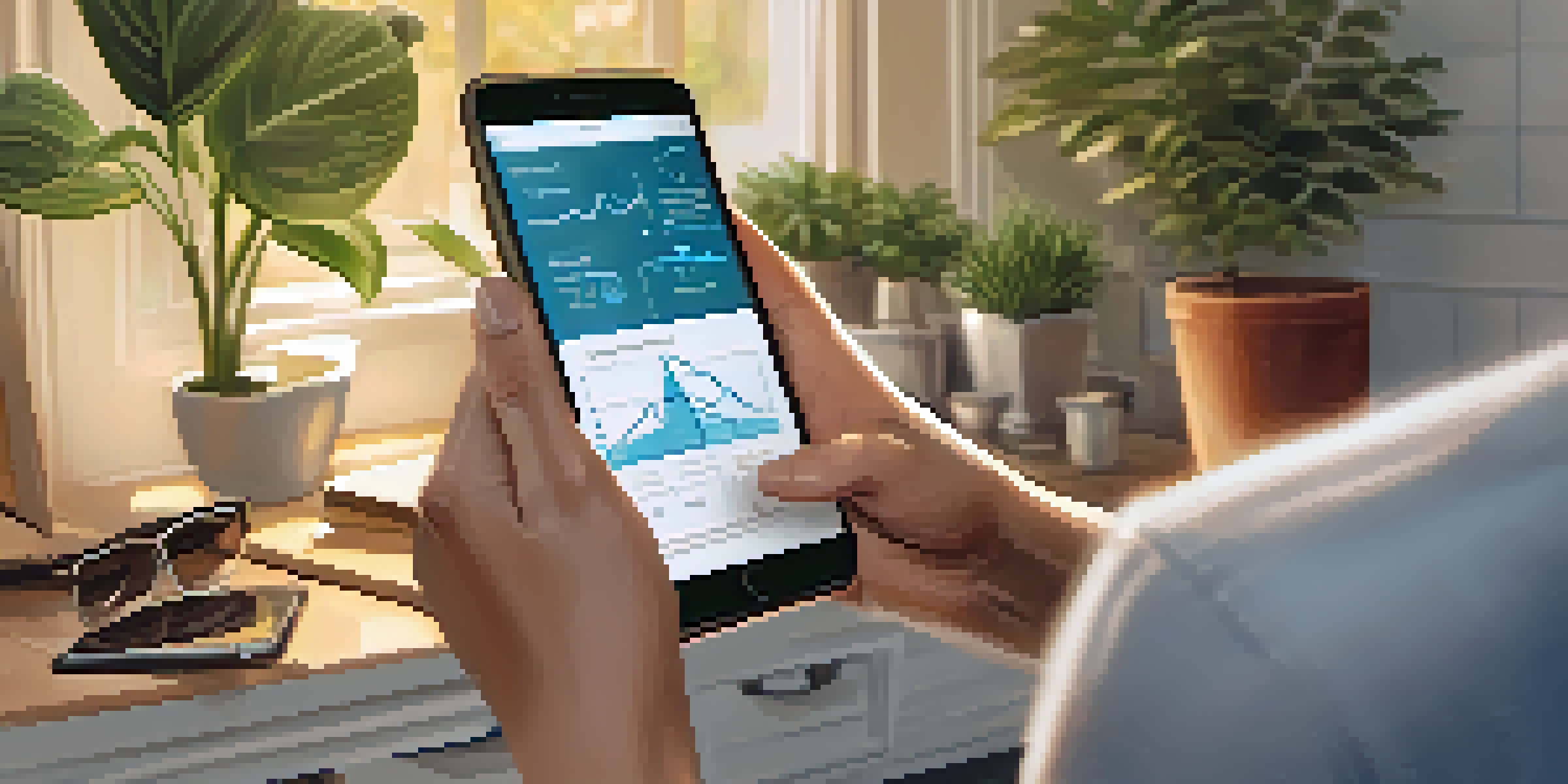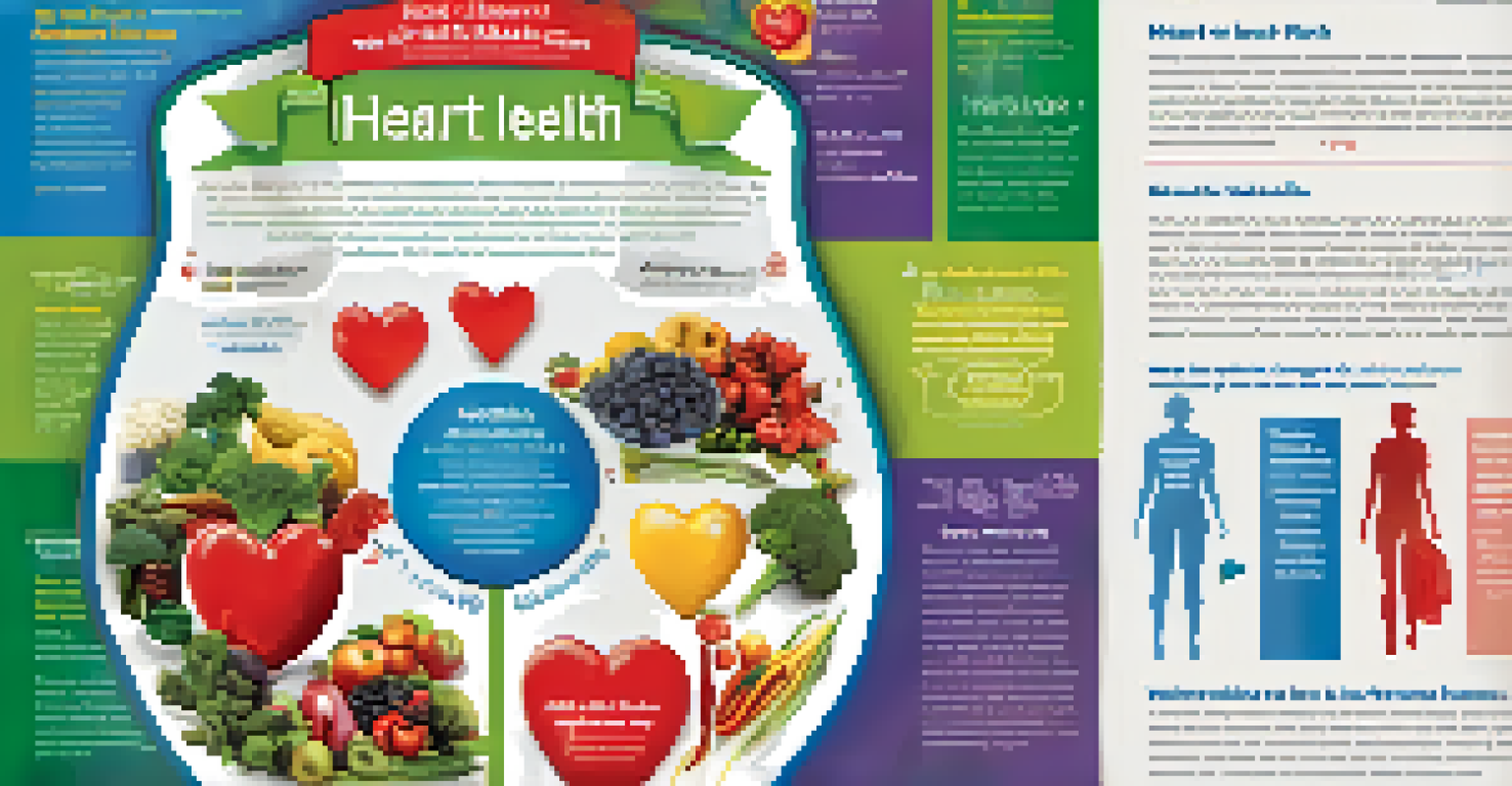Visual Health Literacy: Understanding Medical Graphics

What is Visual Health Literacy?
Visual health literacy refers to the ability to understand and interpret health-related graphics, such as charts, diagrams, and illustrations. It's not just about reading; it's about comprehending the information presented visually. In our increasingly visual world, these skills are essential for making informed health decisions.
The ability to read and understand health information is essential for making informed healthcare decisions.
For instance, consider a patient reviewing a medication guide that includes images of potential side effects. If they can grasp the visual cues quickly, they're better equipped to monitor their own health. This understanding can lead to more proactive health management and improved outcomes.
Ultimately, visual health literacy empowers individuals to navigate complex medical information, fostering better communication between patients and healthcare providers. As healthcare continues to evolve, these skills will become even more critical.
The Role of Medical Graphics in Healthcare
Medical graphics play a vital role in conveying complex health information succinctly. Whether through infographics, illustrations, or digital displays, these visuals can simplify intricate concepts. Think of a diagram showing the human anatomy; it can make understanding bodily functions much more accessible than text alone.

Moreover, visual aids can enhance patient education, helping individuals grasp the implications of their health conditions or treatments. For example, a flowchart depicting the steps of a surgical procedure can alleviate anxiety and clarify expectations for patients.
Visual Health Literacy Explained
Visual health literacy is the ability to interpret health-related graphics, empowering individuals to make informed health decisions.
As healthcare providers increasingly use visual tools, it's essential for patients to develop the skills necessary to interpret these graphics effectively. This not only fosters understanding but also encourages active participation in their own care.
Why Visual Health Literacy Matters
Visual health literacy is crucial in today’s healthcare landscape, where information overload can be overwhelming. Patients are often bombarded with data from various sources, making it challenging to discern what’s relevant. Being visually literate allows them to filter out noise and focus on what truly matters for their health.
In a world where information is abundant, the skill to interpret visual data is crucial for effective communication and informed decision-making.
For example, consider a patient trying to understand their lab results. A well-designed visual representation can help them quickly grasp whether their results are within the normal range. This immediate understanding can lead to quicker questions and more informed discussions with their healthcare providers.
In essence, improving visual health literacy can lead to better health outcomes, as patients who understand their health information are more likely to adhere to treatment plans and make informed decisions.
Barriers to Achieving Visual Health Literacy
Despite its importance, several barriers can hinder visual health literacy. One significant challenge is the variation in individuals' educational backgrounds and cognitive abilities. Not everyone interprets visuals the same way, leading to potential misunderstandings or misinformation.
Additionally, healthcare materials often vary in quality and complexity. Some graphics might be overly technical or poorly designed, making them difficult to understand. This can leave patients feeling confused rather than informed, which is counterproductive.
Understanding Visual Health Literacy
Visual health literacy enables individuals to interpret health-related graphics, leading to better health decisions.
Addressing these barriers requires a concerted effort from healthcare providers, educators, and designers to create clear, accessible materials that cater to diverse audiences. By doing so, we can enhance overall health literacy in our communities.
Improving Visual Health Literacy Skills
Improving visual health literacy skills is a collaborative effort that can be approached in several ways. First, individuals can practice interpreting various health-related graphics, such as infographics or medical illustrations, to become more familiar with common visual formats. This exposure can build confidence and competence over time.
Healthcare providers can also play a vital role by offering resources and educational opportunities that focus on interpreting medical graphics. Workshops or informational sessions can help patients enhance their skills and feel more empowered in their healthcare journeys.
Lastly, engaging with community programs that focus on health education can foster a collective understanding of visual health literacy. These initiatives can bridge gaps and ensure that everyone has the tools they need to make informed decisions about their health.
The Future of Visual Health Literacy
As technology continues to advance, the future of visual health literacy looks promising. Innovations like augmented reality (AR) and virtual reality (VR) could revolutionize how patients interact with health information. Imagine being able to visualize a 3D model of your heart during a consultation; this could enhance understanding exponentially.
Additionally, the integration of artificial intelligence (AI) in healthcare could lead to personalized visual content tailored to individual learning styles. This adaptability could make health information more accessible and easier to understand for everyone, irrespective of their background.
Importance of Medical Graphics
Medical graphics simplify complex health information, enhancing patient education and engagement in their care.
By embracing these advancements, we can pave the way for a future where visual health literacy is not just a skill but a standard expectation for all patients.
Conclusion: Empowering Through Visual Health Literacy
In conclusion, visual health literacy is a vital component of effective healthcare communication. It empowers patients to understand their health and make informed decisions based on clear, visual information. As we continue to navigate a world filled with complex medical data, these skills will become increasingly important.
Healthcare providers, educators, and communities must work together to enhance visual health literacy. By addressing barriers and fostering skill development, we can ensure that everyone has the ability to comprehend their health information.

Ultimately, when individuals are equipped with the tools to interpret medical graphics, they can engage more actively in their care, leading to better health outcomes and a more informed society.